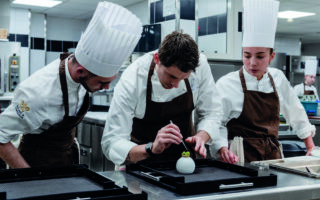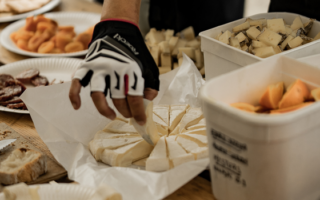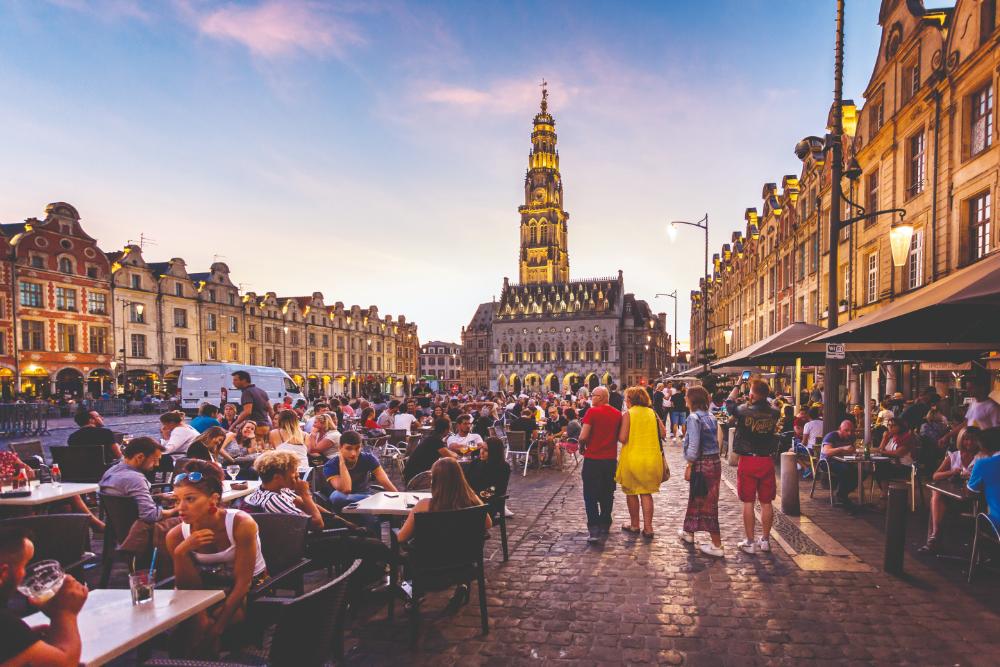
Arras: A Gourmet City Break
Arras may not be an obvious food destination, but with a varied menu of Flemish-influenced dishes, spring beers, world-class fries and even chocolate rats, it is a hidden gem for adventurous gourmets, as Amy McPherson discovers…
Compared with the likes of Lyon, Toulouse and Bordeaux, you wouldn’t normally associate Arras with the world of gastronomy. After all, the city’s unofficial mascot is a rat, and what do rats know of good cuisine? Oh, that rat, in the film Ratatouille. Well, perhaps the film should have been set in Arras.
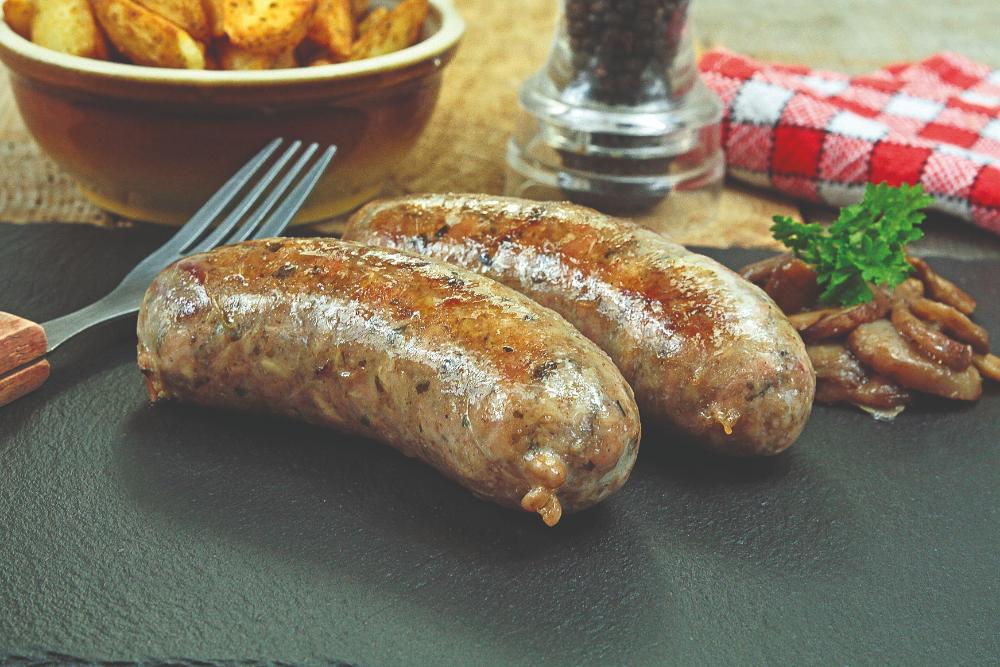
During the couple of days I spent in the city. I found its food was intertwined with its Flemish and French roots and the international influences of war, which have resulted in a city that is not afraid to experiment with flavours and the tastes of the past. All of this makes Arras the perfect place for a dégustation of northern French cuisine, as I discovered during a meal at a lovely restaurant called La Cave des Saveurs.
The infamous andouillette
I’ll admit it. It was never going to be love at first bite. A delicacy with medieval roots, this sausage is essentially a medley of tripe and other internal organs stuffed into tubes of intestine casing, “Nope. I’m not eating it, ever,” said a friend who lives on the coast of northern France. “I know I live here, but no.”
“And you see,” explained Benoît Diéval, from Pas-de-Calais Tourism, who accompanied me for dinner. “Even locally it divides opinions!
The first recorded mention of a sausage made from offal dates back to the Middle Ages. Originally from the Champagne region, some of the finest recipes even marinated the pork tripe in champagne.
Andouillette was officially referenced in 1590 during the French Wars of Religion when soldiers of the royalist army were so engrossed in their meal, they left themselves vulnerable – allowing the opposing League forces to ambush and slay some of them mid-feast. They’re not the only andouillette fans in history either: Louis XIV and Napoleon also reportedly loved it. So, this oft-reviled sausage is not without culinary credentials.
Surprisingly, after a few more bites of my first andouillette, I realised I didn’t hate it. Naturally, it is an acquired taste, rather like chewing rubber bands, and the flavour is very much dependent on the skill of the butcher who makes it because it takes knowledge and experience to be able to mask the pungency of offal. And for that reason alone, it’s worth taking the time to ask around and choose wisely before purchasing If you are a fan, however, aim to be here for the annual Andouillette Festival, held on the last weekend of August by the Arras Guild of the Andouillette, when restaurants and market stalls cook up this famous delicacy in all its different variations.
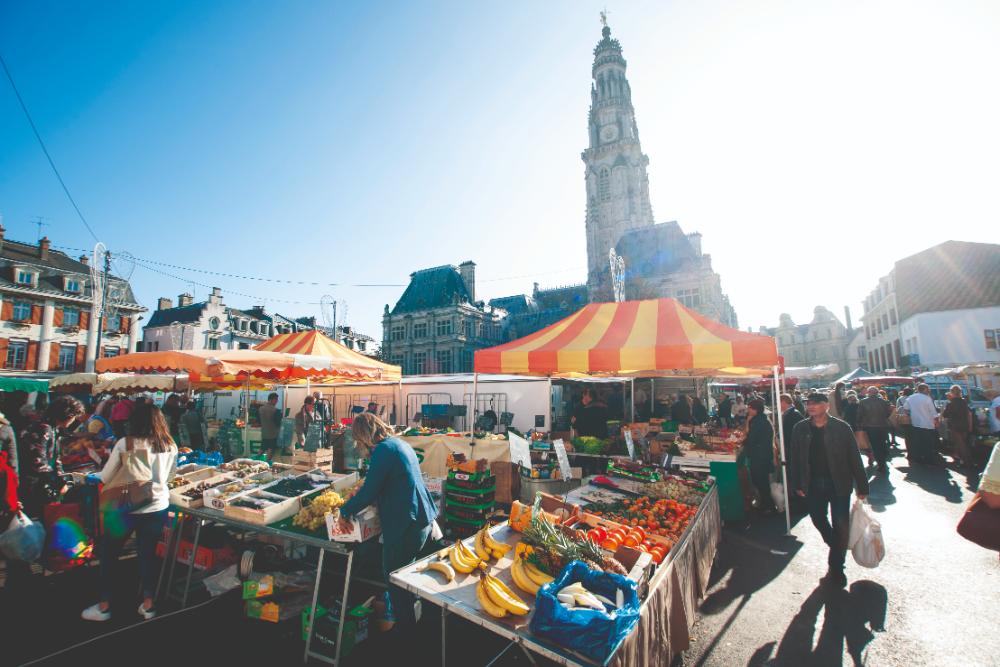
How about fries with that?
The good news is that almost everything is served with fries in Arras, including the andouillette. Mine came with a basket of perfectly sliced potatoes cooked to the colour of sunset, thick enough to soak up the juices of the main dish and thin enough for the crispy texture we all love. “You should come to the French Fries World Championships,” said Benoît as he watched me hungrily stuffing three stalks of chips into my mouth. “It’s a lot of fun, and the fries are really excellent.”
The prospect of a competition about French Fries in France is amusing, considering the term was supposedly coined by Americans in Belgium having tasted fried potatoes, a snack that has been enjoyed by the Europeans since the Spanish conquistadors introduced potatoes to Europe in the 16th century.
But why hold the French Fries World Championships in Arras? Well, it seems that two of the early potato pioneers hailed from the Hauts-de-France region. When the potato was first introduced to the European diet, it was not popular. Charles de l’Écluse, a French botanist who was born in Arras in the 16th century, was the first to experiment with growing potatoes in his garden, in the hopes of making the spud popular with European aristocrats. It did not work, and the potato remained food fit only for the poor. It wasn’t until Antoine-Augustin Parmentier, a pharmacist from the town of Montdidier, began to promote the potato as a viable source of nutrition that interest grew. His name lives on in various potato dishes, such as hachis Parmentier and purée Parmentier, Of course, the Hauts-de-France shares a lot of its heritage with its neighbours in Flemish Belgium, including a passion for fries. In Arras, there is a friterie on every corner – in fact, more than 50% of France’s chip shops can be found in Hauts-de-France. And you know what else is big in northern France? Beer.
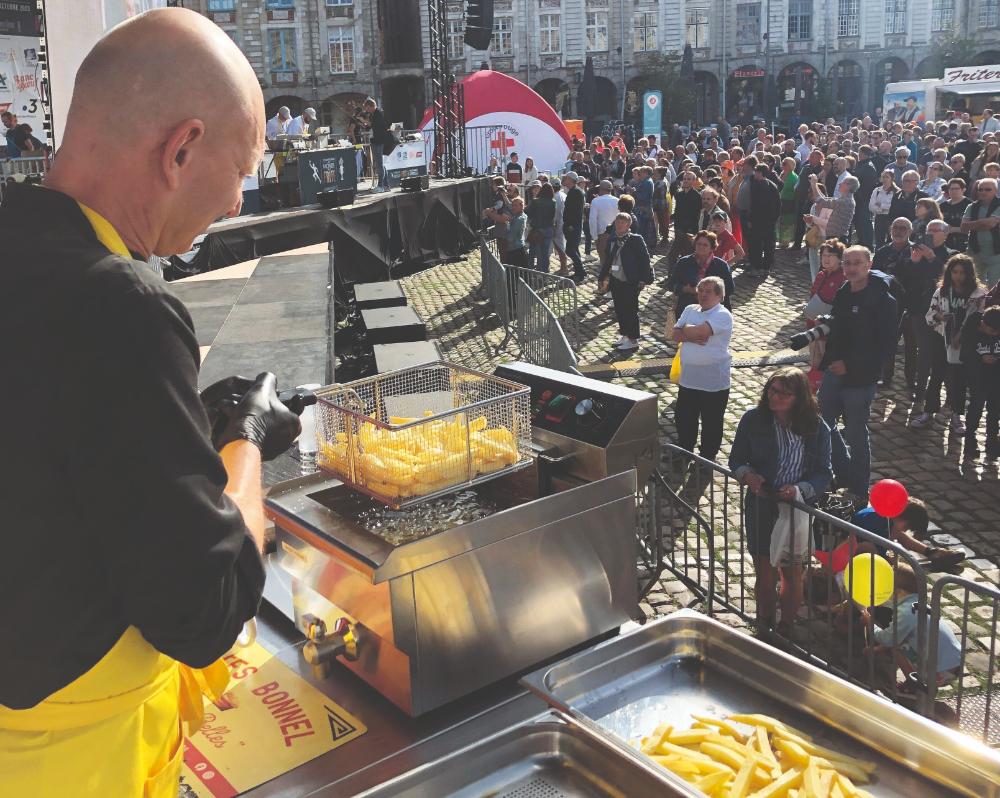
Brewing up a storm
For the meal, I paired my andouillette and fries with a locally-brewed, country-style blonde beer. Benoît went for the dark. “Actually, in Arras, most people prefer the darker beers, but what we are famous for is the spring beer,” he said.
Beer is bigger than wine in northern France, and Arras has been brewing beer since the Middle Ages. It isn’t widely known, but Arras has Hauts-de-France’s oldest spring beer culture, it having first been brewed in the city in 1394. The spring beer, otherwise known as ‘March Beer’ is a beer brewed in winter, allowed to ferment in the cold and ready to drink in spring. Things have changed since the Middle Ages, of course, and these days you can get any kind of beer in Arras, with some excellent micro-breweries experimenting with modern and more popular styles.
And I can confirm, the beer is good. Very good. It is worthwhile, when dining out in Arras, to ask which beer pairs with which meal, because beer pairing is a thing. “Just like wine, we also cook with beer.” Benoît said, “remember the meat stew you had yesterday?”
I did remember the meat stew I had yesterday, my first day in Arras, when we dined at a popular roadside restaurant that is nothing like any roadside restaurant I’ve ever been to in England. Serving up dishes of proper, hearty regional cuisine, it was no wonder the place was heaving with families with kids, lorry drivers and tourists.
I had ordered a carbonnade, a stew of tender beef slow cooked in dark beer (served with a side of fries, of course). I salivated at the memory and Benoît laughed. “Let’s go try some beers at the microbreweries tomorrow, I think you’ll like the experience!”
The cheese course
Having not had a bad meal so far, I was having a moment with northern French cuisine. The love continued into the cheese course: Coœur d’Arras, the heart of Arras, along with a smear of P’tit Dieu and a small wedge of Maroilles.
Although all semi-soft in nature, the three cheeses had different textures and flavours, all of which I washed down with another glass of beer. I smiled at the Cœur d’Arras, thinking it rather cute to have a heart-shaped cheese, until Benoît broke the dreamy thoughts.
“You know, they made that specifically for the rats festival?” Rats? Of course. We are back to the Arras, a rat’ story.
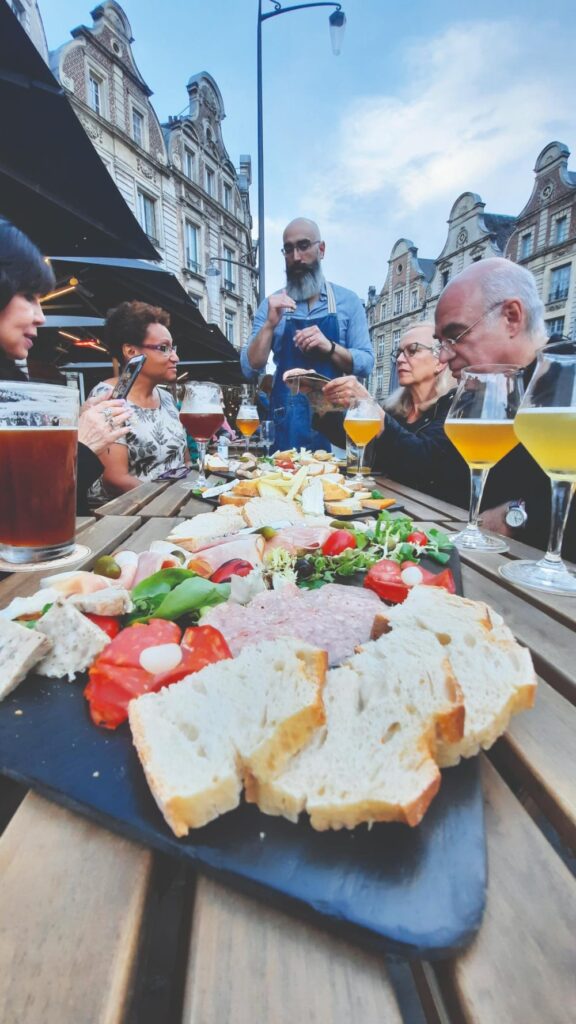
Rats about chocolate
Arras has been linked to rats since 1311 when they appeared on its seal, later featuring on military insignia, coins and civic emblems. The name’s old pronunciation, ‘Arra’, resembled the French word ‘rat, reinforcing the association, and during the 1640 siege of the Thirty Years War, a Spanish taunt referencing rats was altered after the French victory.
Today, rats appear in Arras culture, from chocolate rat confections to architectural carvings around Place des Héros and the City Hall. Naturally, there is a rat festival. But did I know it’s also a chocolate? No, I did not. Le Rat d’Arras is a popular little rat-shaped chocolate created by pâtissiers-chocolatiers Sébastien and Corinne Thibault, whose trademarked crispy praline feuilletine covered with dark chocolate have spread all around the world, Bags of Le Rat d’Arras can be bought from the tourism office and souvenir stores, but nothing beats visiting Pâtisserie Thibaut Arras itself, where you can buy them direct from the hands that made them.
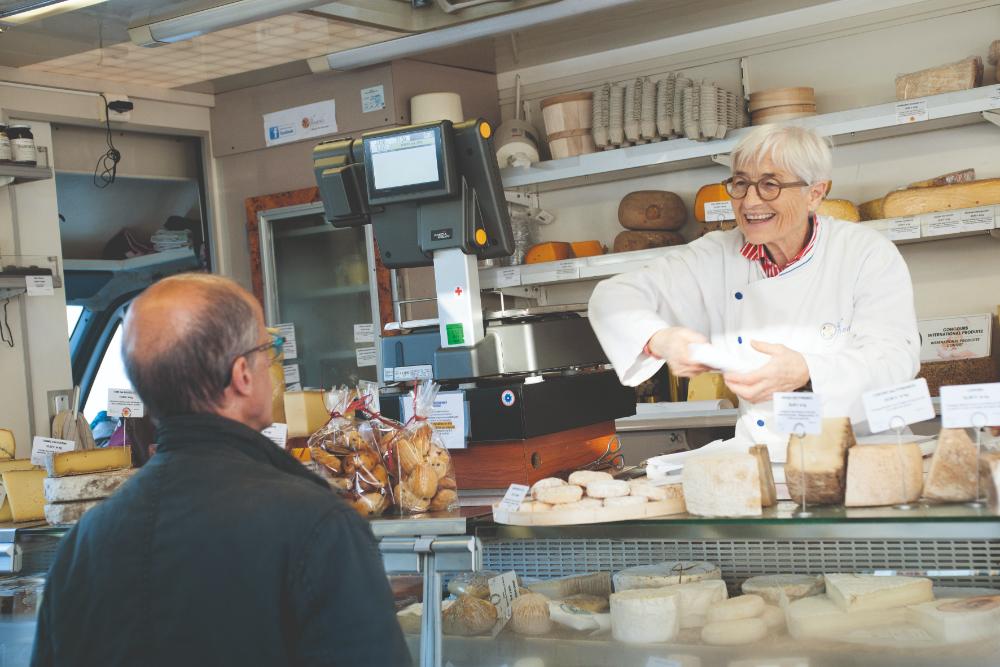
Off to market
The next day was a Saturday, so after breakfast, I followed the crowds to Place des Héros to check out the local market. No French gourmet experience is complete without a visit to the local market. For 1,000 years Arras has celebrated all things delicious and wonderful with its colourful and lively weekly markets. A small farmers’ market can be found at the Place des Héros on Wednesday mornings, but it is the Saturday markets held at the Place des Héros and at the Grand Place and Place de la Vacquerie that truly showcase the regional produce. Join the crowds of locals and sample the goods on offer from knowledgeable regional producers. The markets, selling fruits, vegetables, meats, cheese, beers and craft items of various kinds, are considered some of the best in France. It’s also worth knowing that Arras has one of France’s cosiest and most atmospheric Christmas markets too.
There is quite the atmosphere in the beautiful Place des Héros, which is home to the City Hall and its Belfry (a UNESCO World Heritage site). Mostly destroyed by the First World War, Arras painstakingly followed the blueprint of the city which had been drawn up by Philip II during Spanish rule and restored the main squares of the city to their original brilliance, the Flemish-Baroque style façades and arcades all faithfully restored, I sat people-watching as merchants shouted out their specials and buyers negotiated the chaos for their purchases. And I couldn’t help to let my mind wander.. what dish should I try for my lunch?
“My dear, there is so much to eat!” Benoît replied to my text asking exactly that. “There’s the Arras version of the Welsh Rarebit, the Flemish potjevleesch or the waterzooi chicken stew. Or just get some fries at the friteries!”
With such a vast choice, it’s hard to know what to choose. But one thing is for sure. You won’t ever go hungry in Arras.
WHERE TO EAT & DRINK
- La Cave des Saveurs a cosy restaurant on the Grand Place with traditional French and Flemish dishes and great beers.
- La Passe Pierre traditional seafood restaurant serves a menu including potjevleesch fish stew and fish and chips.
- Restaurant l’Oeuf ou la Poule on Place des Héros serves only local beers with a modern menu.
- L’Arras’in microbrewery with brasserie offers beer tasting sessions (book online).
- Bar La Capsule is an extension of La Capsule in Lille, and has an extensive range of beers from all over northern France and Belgium.
Looking for more French food and drink content?
In our magazine we offer a whirlwind tour of the best gastronomic destinations. Discover La Belle France’s renowned markets, quirkiest food festivals, most indulgent restaurants and foodie experiences.
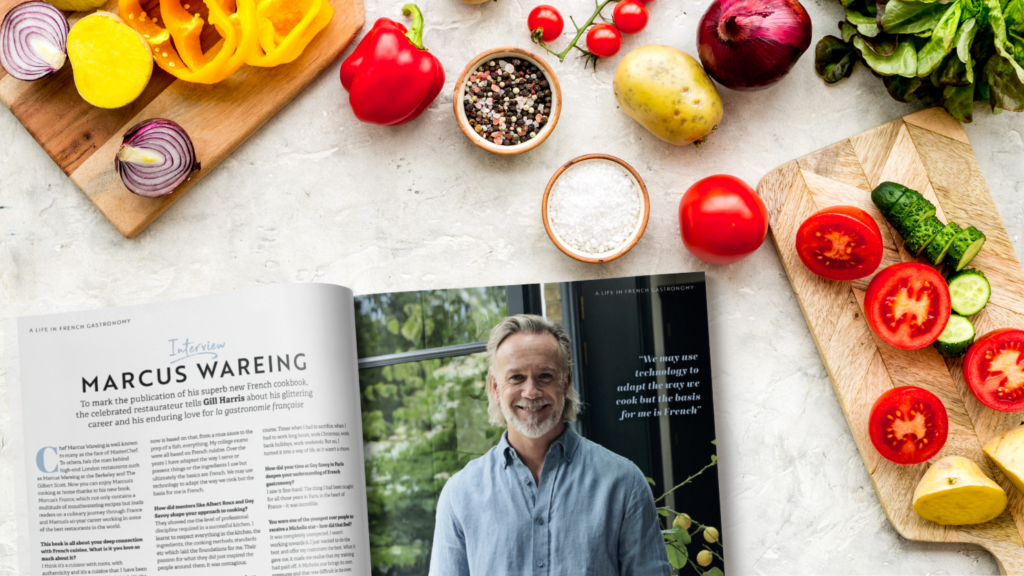
Lead photo credit : © SHUTTERSTOCK, ALAMY
Share to: Facebook Twitter LinkedIn Email
More in Arras, city break

